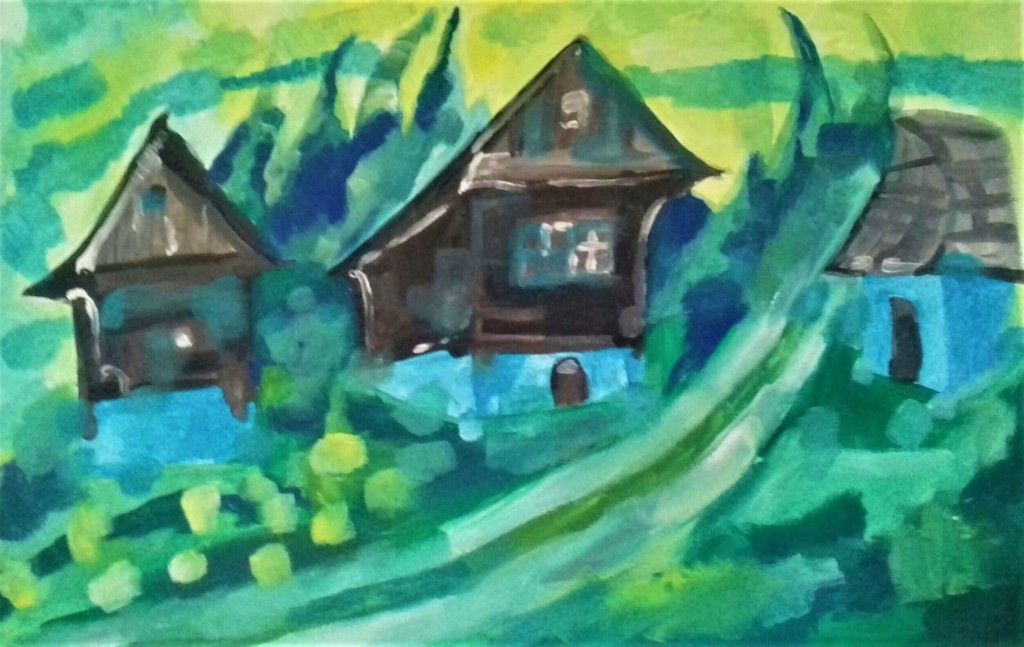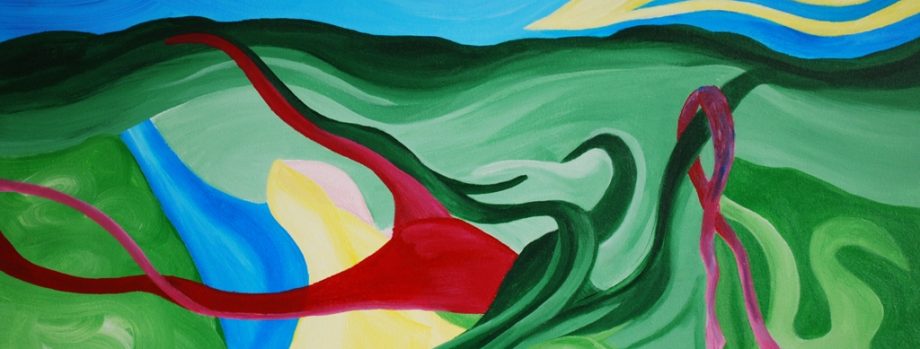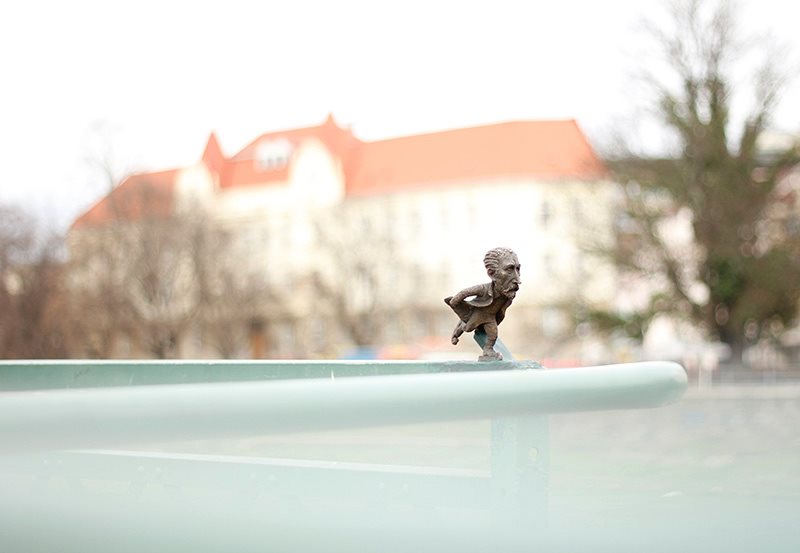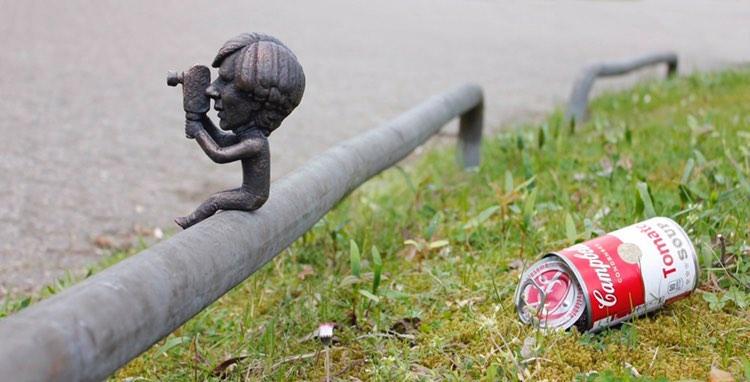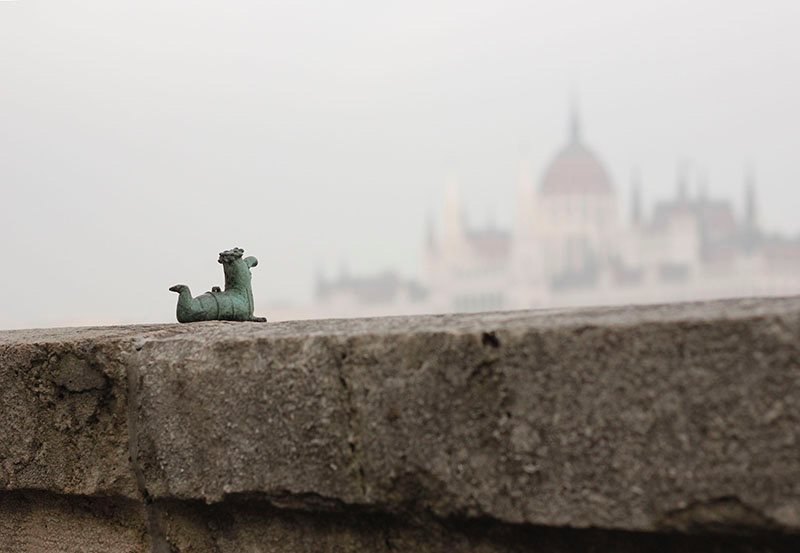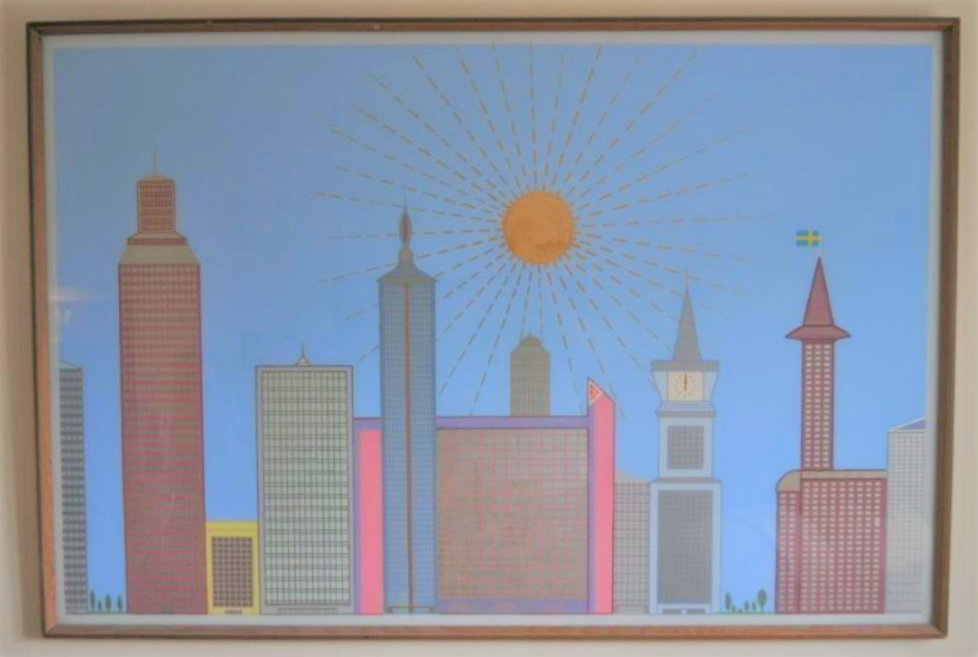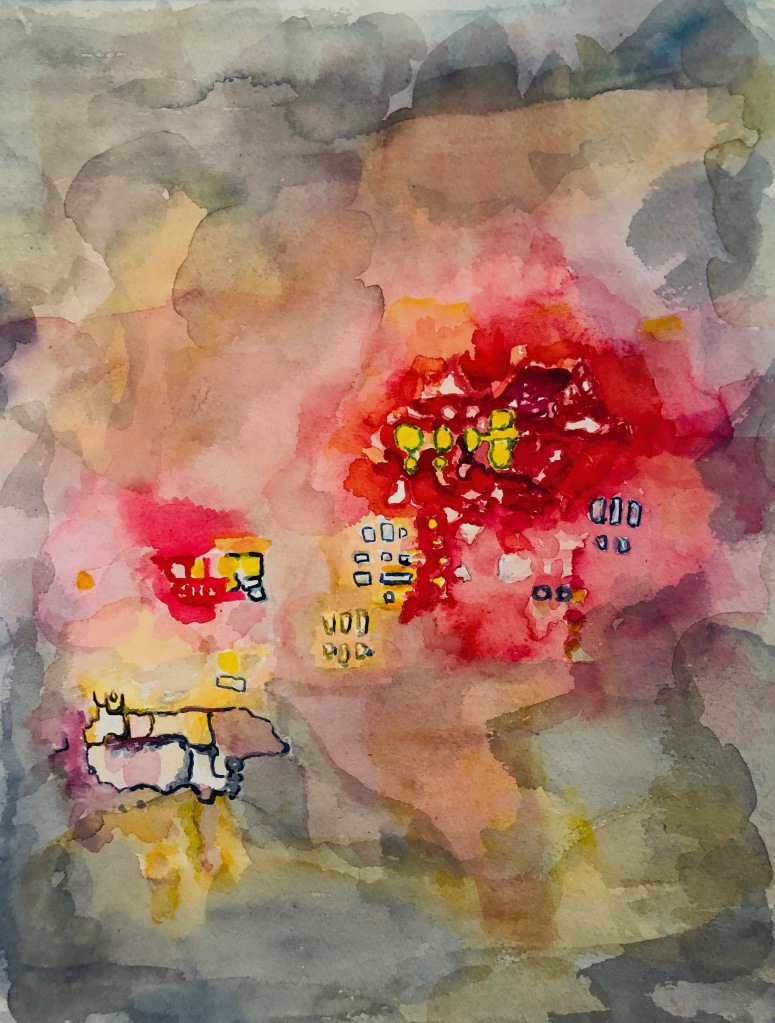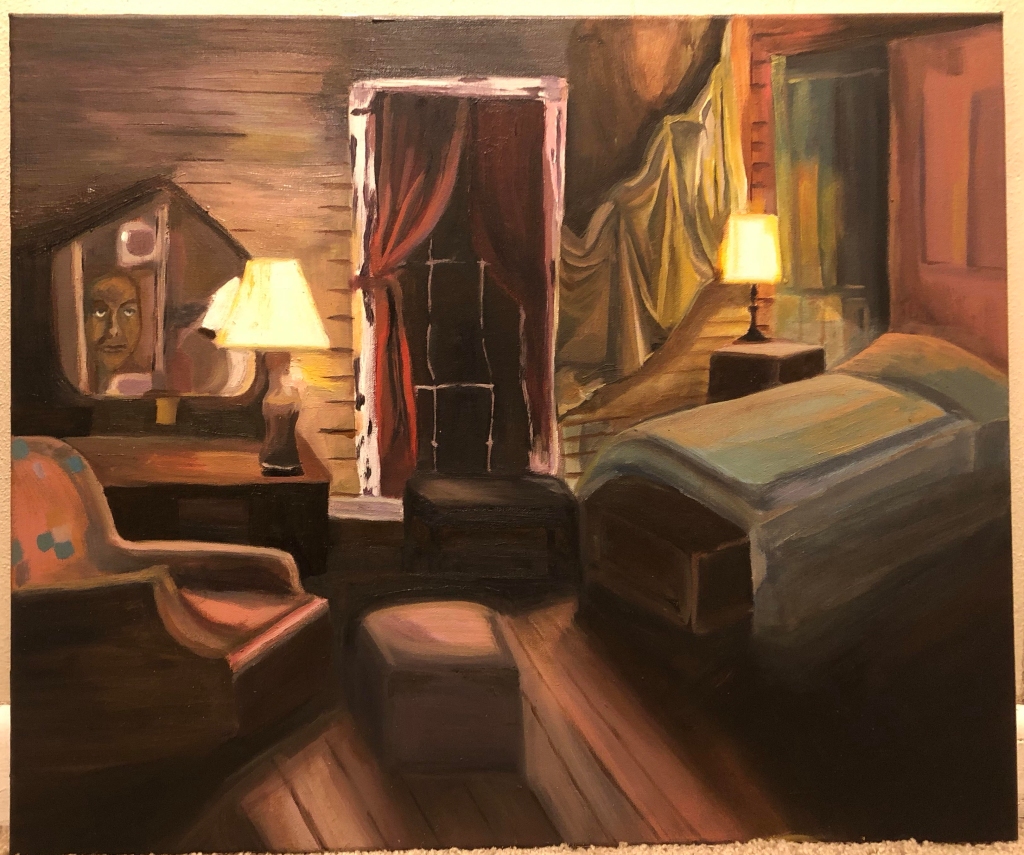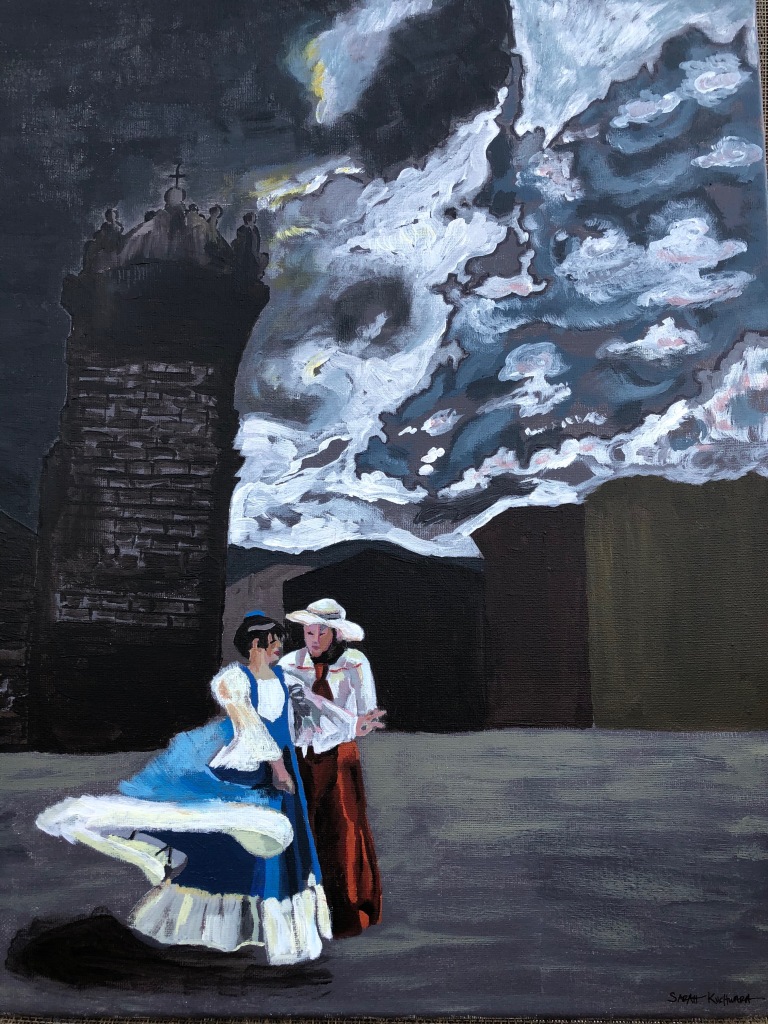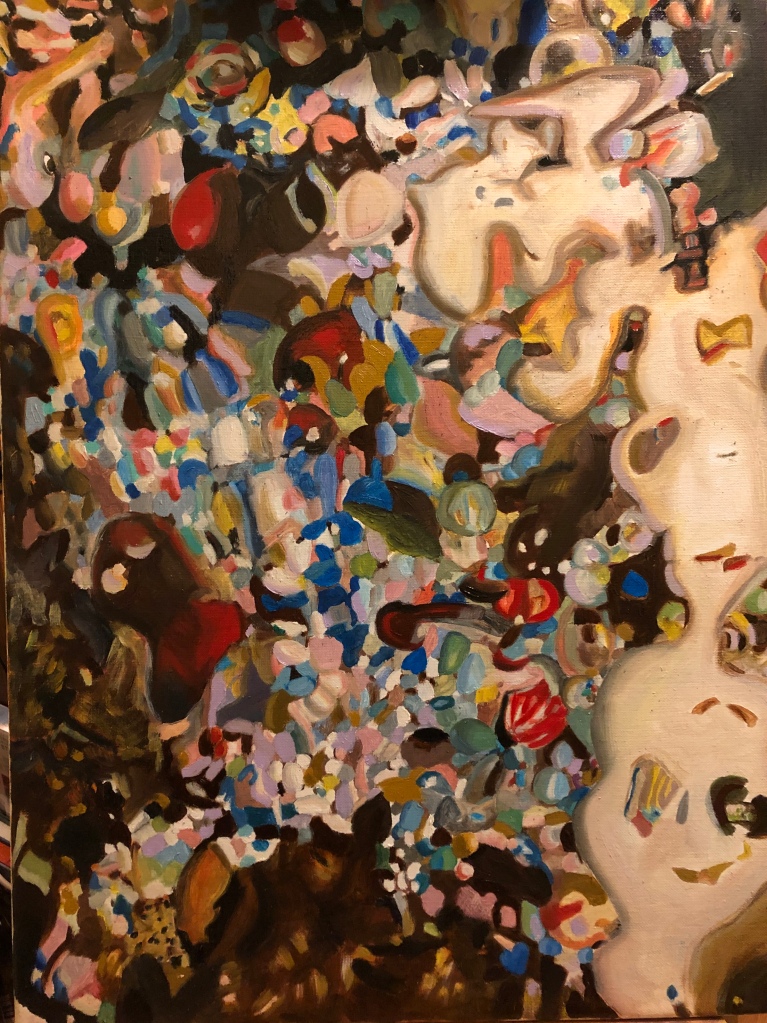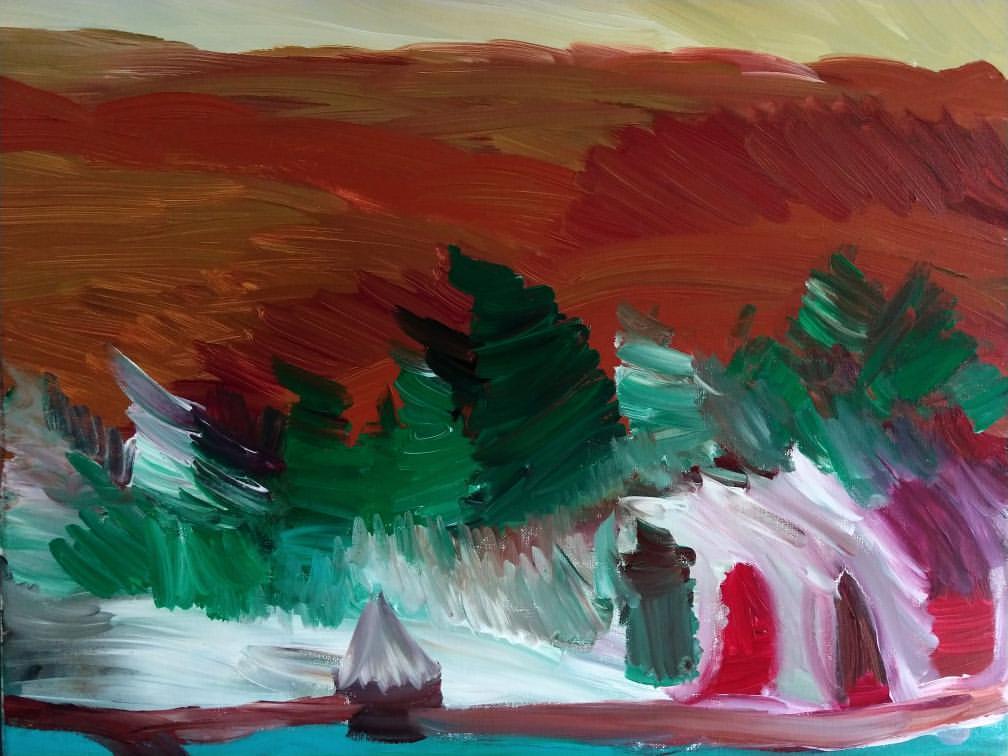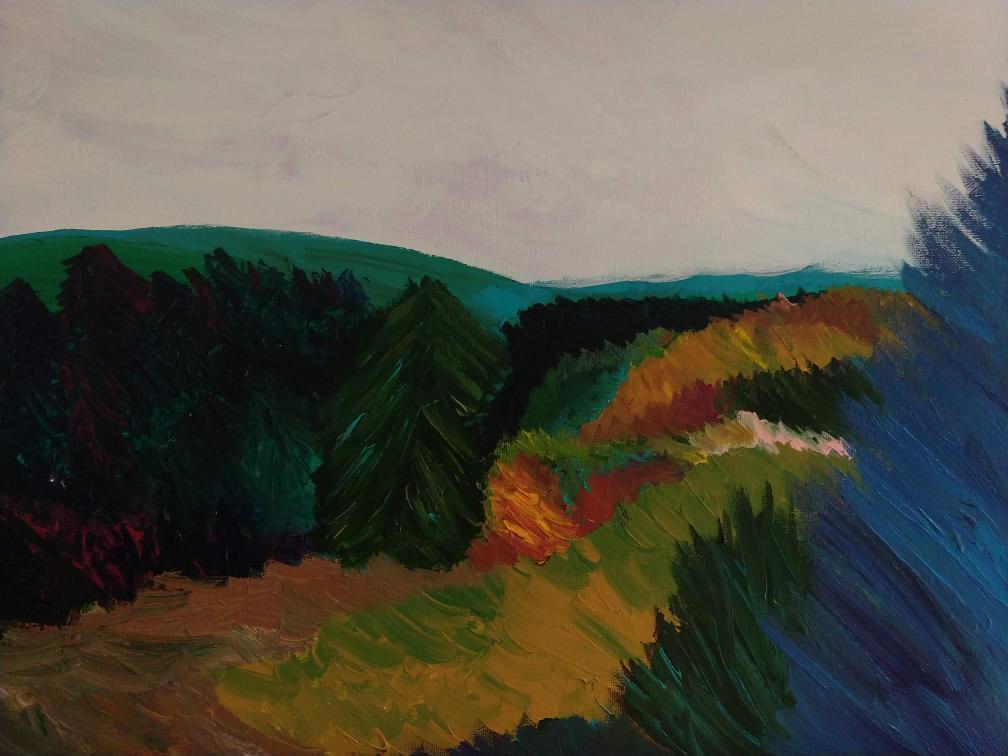Antonija, thank you so much for taking your time and doing this interview for Rusyn Art. You aren’t Rusyn yourself, but you do have close ties to our community. Tell our readers a bit about your personal and professional background.
Hello, my name is Antonija Poljan. I studied at the School of Applied Arts and Design and Teaching faculty. I work as a preschool teacher, and in my free time I enjoy making paintings or some other creative craft. My artworks are mostly illustrations because my dream is to make picture books. In that way my two biggest passions will be perfectly matched.
What subject matter do you usually take up?
In the last decade my themes of paintings have changed a bit, older artworks were more oriented to serious topics, such as the lack of communication or socialization. In the last few years I started to switch more and more to illustration, which mainly consist of more playful compositions, characters and floral patterns. My artworks depict people made up of lots of colors. My style is somewhere between figurative and abstract, I like to paint various shapes all imagined in my head. However, as many artists, when I experience something unique or inspirational, I like to transfer it onto a paper or canvas. That was the situation with Rusyn themed paintings.
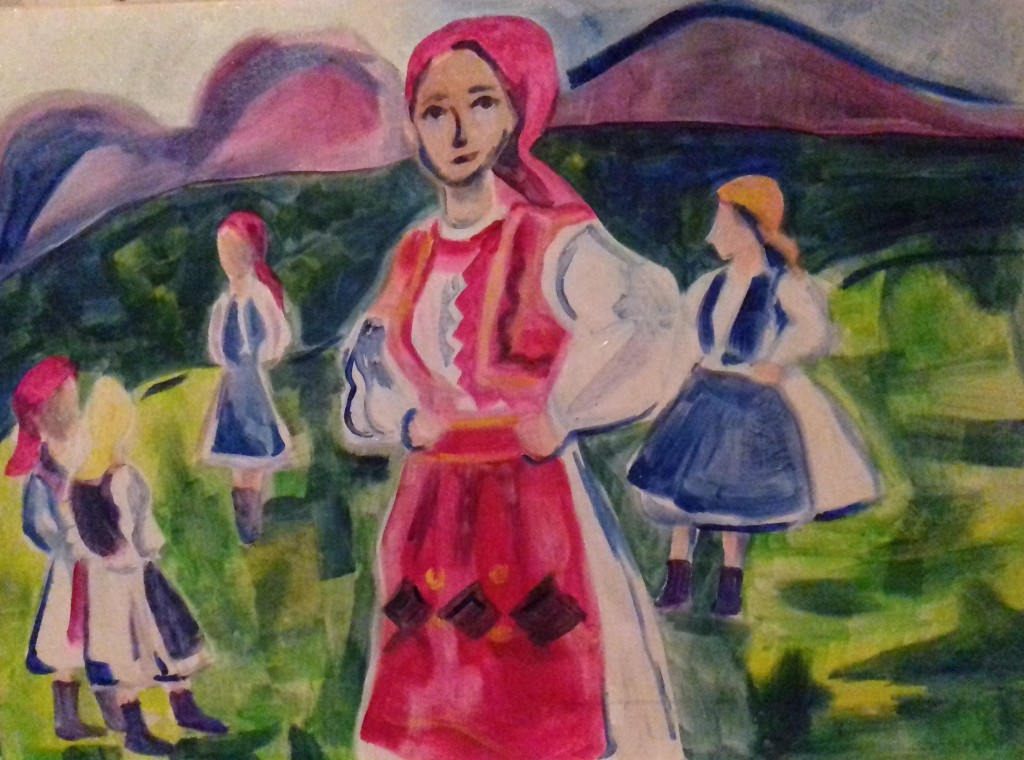
You have taken part in an exhibition “Rusinski Mozaik.” How did you get to participate?
At university I became very close friends with one nice girl, Ivona Hnatko, who is very lively and interesting person. She introduced me to the Rusyn culture by talking about her experience in a Rusnak Society in Croatia. Ivona is their quite an active member, as is her whole family. And it was so nice to see and hear her experience and her love for Rusyn culture. She talked about Rusyn history, how the Rusnak function and also about Rusyn conferences. Last summer she asked me to attend a Rusyn conference in Stara Lubovna, Slovakia, with her. It was a few days filled with meeting people from all around the world. It was there where I got the strongest memories that I now associate with Rusyn folklore. Dancing, folk costumes, and music. I really liked the vibrant colors of their costumes. So after those lovely memories I was very inspired. It was actually Ivona who suggested that I participate in an exhibition “Rusinski Mozaik” in Croatia by contributing some paintings of my own. I instantly liked the idea, so I put all those motives on canvases, using my style of illustrations with using lots of colors.
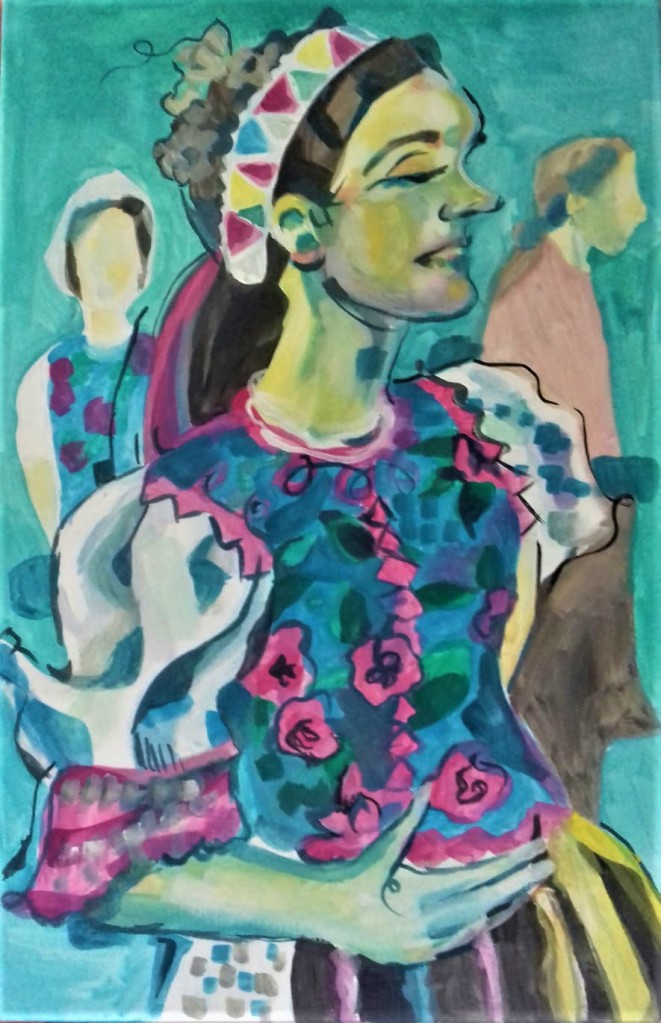
Can you tell us a bit more about this event?
The event Rusinski Mozaik took place in small place Petrovci in Croatia. It was an interesting combination of different art forms which included performing and visual arts. In the art exhibition people could see such Rusyn-themed works as my illustrations or paper-craft 3D origami art, whose author is our close friend Marta Badanjak.
I hope she could also join us here at Rusyn Art for an interview one day.
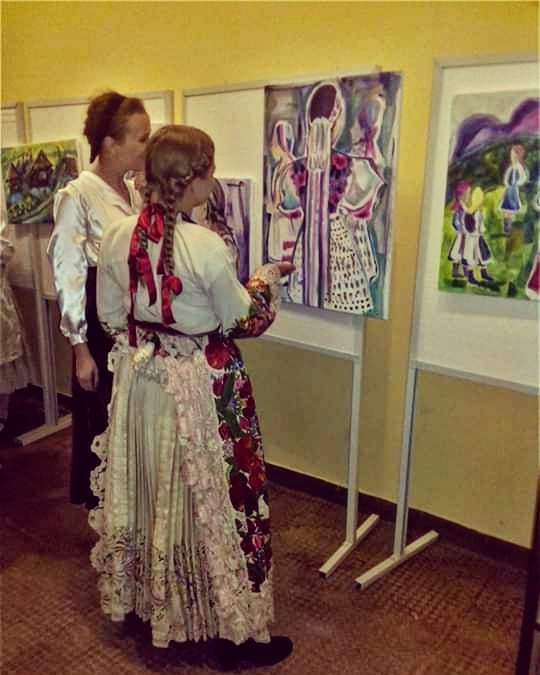
What artworks and how did you create them?
My aim was to contain some memories, and I think that the people who saw or will see them can re-experience those moments, too. In the art field it so often happens that different types of art are connected. A song is written on someone’s impression of a movie, or some drawing is made after reading a fantastic novel.
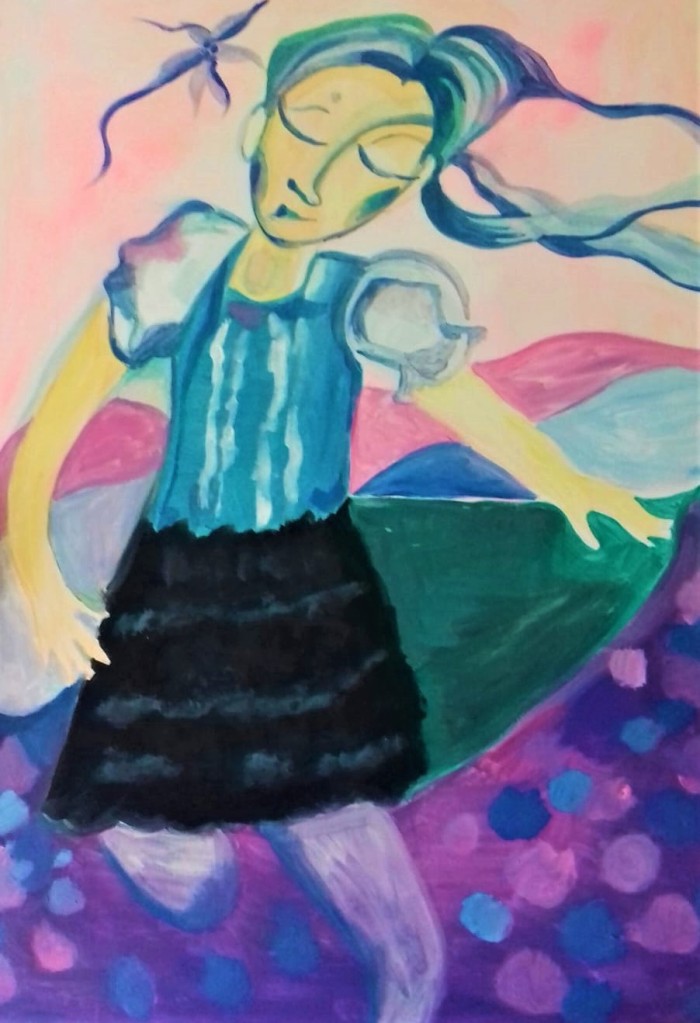
Your paintings caught my eye immediately – and I only saw them photographed. I can imagine how beautiful they must be in person. Where are they now?
A part of them was sold during that same exhibition, some of them I gave as a present to Rusnak Society, and the rest live with me in my home :-).
And finally what does future hold for you? Rusyn-related or not.
After that exhibition I started to work as a preschool teacher, so I’ve put a lot of time in that field. However, in my free time I paint a lot, other themes for now, but I really like the paintings which were shown at “Rusinski Mozaik.” I think I will make more artworks on that theme, but in a different artistic approach, changing style and colors to more imaginative and magical characters.
Good luck with that. I hope you’ll share them with us as well. Antonija, it was such a pleasure to talk to you and to communicate with you. You are a talented artist and that joy and passion you feel in every aspect of you life, as you told me, shows through every stroke. Thank you for your wonderful contribution to the world of Rusyn paintings.
